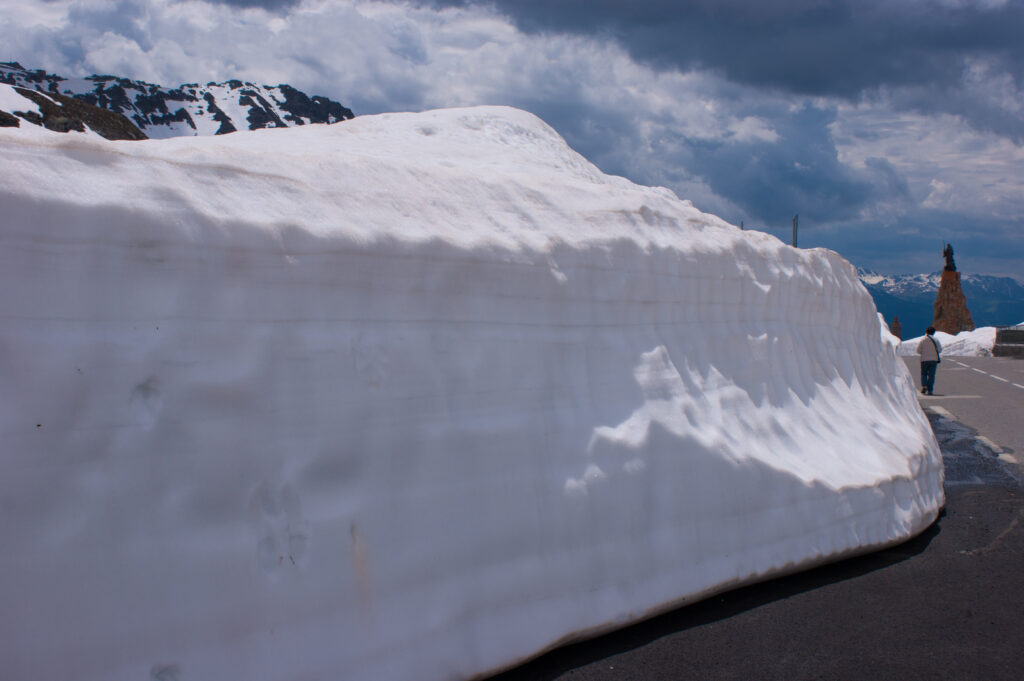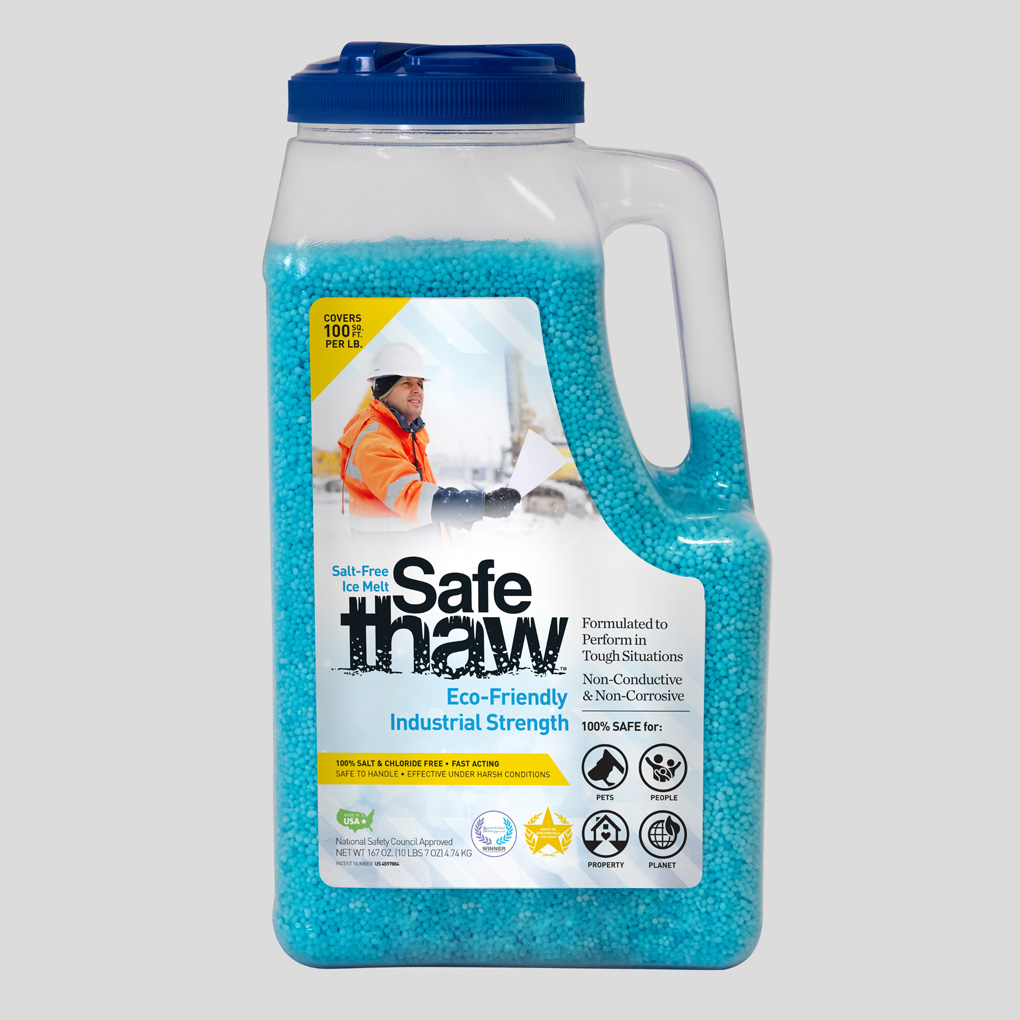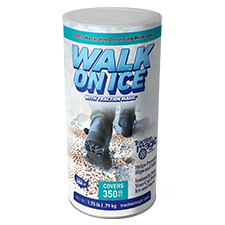Diy Guide: How To Make Dry Ice Safely At Home

Dry ice, a fascinating substance commonly used for a myriad of purposes, can be a valuable asset in various DIY projects. Have you ever wondered how to make dry ice safely at home? Look no further!
By gathering the necessary materials, setting up a safe work area, handling the CO2 source with care, converting CO2 into dry ice, collecting and storing the dry ice, and disposing of it properly, you can make dry ice safely at home.
In this comprehensive guide, we will walk you through the step-by-step process of creating dry ice, along with safety precautions and fun applications. While it may seem complex, with the right information and precautions, you can successfully produce this frozen carbon dioxide without any hassles.
Let’s dive in and unlock the secrets of how to make dry ice effectively and securely.

Frozen Driveways? Melt the Ice Away with Safe Thaw!
Safe Thaw was created as the ice management solution for tough winter environments. Ideal in commercial and industrial properties, shops, government agencies, bridges, and construction.
Composition And Properties Of Dry Ice
Solid carbon dioxide (CO2), sometimes called dry ice, is an intriguing material with special characteristics. It is formed by compressing and cooling gaseous carbon dioxide, causing it to solidify into a solid-state without passing through a liquid phase.
Dry ice is extremely cold, with a temperature of -78.5 degrees Celsius (-109.3 degrees Fahrenheit), and it sublimates directly from a solid to a gas without melting. This process creates the characteristic fog or smoke often associated with dry ice.
In general, dry ice is non-toxic but should be handled carefully due to its extremely low temperature, which can cause frostbite. It is commonly used for cooling, transporting perishable goods, creating special effects, and as a cleaning agent in certain industries.
How To Make Dry Ice Safely At Home? [Step-By-Step Guide]
Creating dry ice at home can be an exciting science experiment, but it is essential to prioritize safety throughout the process. Dry ice is formed by converting carbon dioxide (CO2) gas into a solid-state without passing through a liquid phase. Here we will provide step-by-step instructions on making dry ice safely in the comfort of your home.
Gather The Necessary Materials
Before you begin, make sure you have all the required materials. You will need a fire extinguisher, insulated gloves, a CO2 source, a dry ice pellet, and a well-ventilated work area. Wear safety goggles and gloves to protect yourself from potential hazards.
Set Up A Safe Work Area
Choose a well-ventilated space, preferably outdoors or in a room with good air circulation. Place a fireproof surface in your designated work area, such as a metal tray or a concrete floor. Keep children and pets away from the workspace to prevent accidents.
Handle The Co2 Source With Care
When working with the CO2 source, exercise caution to prevent gas leaks and ensure safety. If you are using dry ice pellets, carefully transfer them into a container, making sure to avoid direct skin contact. Always use insulated gloves or tongs to handle the dry ice, as direct contact can cause frostbite.
Winter Storms Are Here!
Stay Safe with Our 100% Salt And Chloride-Free, Pet Safe Ice Melt.
Convert Co2 Into Dry Ice
You can use a couple of methods to convert CO2 into dry ice. One option is to use a CO2 fire extinguisher. Aim the nozzle at an open container, such as a Styrofoam cooler, and allow the gas to fill the container. The carbon dioxide will solidify, forming dry ice. Another method involves creating a DIY chamber using a pressure vessel to contain and compress the CO2 gas until it solidifies.
Collect And Store The Dry Ice
Once the dry ice is formed, use insulated gloves or tongs to collect it and transfer it into a suitable storage container. Insulated coolers or specialized containers designed for dry ice storage are recommended. Remember that dry ice will sublimate over time, so ensure proper ventilation to prevent the buildup of carbon dioxide gas.
Dispose Of Dry Ice Properly
When you’re finished using dry ice, you’ll need to dispose of it properly. Allow any remaining dry ice to fully sublimate in a well-ventilated area before disposing of the container. In that case, you can use Safe Thaw, a widely used ice melter solution containing no harmful chemicals. Never dispose of dry ice in airtight or non-ventilated containers, as the buildup of gas pressure can cause the container to burst.
Safety Considerations And Potential Hazards While Making Dry Ice
You should know the safety considerations and potential hazards when making dry ice at home. While the process can be exciting, prioritize your well-being and take necessary precautions to ensure a safe environment.
- Extreme Cold Temperature: Dry Ice Is Incredibly Cold, With A Temperature Of -78.5 Degrees Celsius (-109.3 Degrees Fahrenheit). Direct Contact With Dry Ice Can Cause Frostbite Or Severe Burns, So Always Wear Insulated Gloves Or Use Tongs When Handling It.
- Carbon Dioxide Gas: As dry ice sublimates, it releases carbon dioxide gas. High concentrations of carbon dioxide can cause dizziness, headaches, and difficulty breathing. Ensure adequate ventilation in your work area; never work in confined spaces without proper ventilation.
- Risk of Asphyxiation: Carbon dioxide is a colorless and odorless gas. Working in an area with insufficient ventilation or exposure to large amounts of carbon dioxide gas can lead to asphyxiation. Always work in well-ventilated areas and take breaks if you feel lightheaded or short of breath.
- Gas Pressure Buildup: When storing dry ice in a sealed container, the sublimation process creates pressure. If the container is airtight, the pressure can build up and cause it to burst. Use containers specifically designed for dry ice storage, ensuring proper ventilation to release the gas pressure.
- Fire Hazards: Dry ice does not melt; it sublimates from solid to gas. However, placing it in a tightly sealed container can cause pressure buildup and potentially explode. Never store dry ice in airtight containers or glass bottles that can shatter under pressure.
Exploring Fun Applications: Get Creative With Your Homemade Dry Ice
Once you have successfully created dry ice at home, it’s time to explore its fun and creative applications. The unique properties of dry ice make it a versatile tool for various exciting experiments and activities. Here, we will dive into some captivating ideas to inspire you to get creative with your homemade dry ice.
Spooky Fog Effects
One of the most popular uses of dry ice is creating spooky fog effects for Halloween or themed parties. Simply place small pieces of dry ice in a container of warm water, and watch as the fog billows and fills the room. This eerie effect adds an atmospheric touch to any gathering.
Scientific Experiments
Dry ice opens up a world of scientific exploration. Conduct experiments to observe how different substances react to extremely cold temperatures or create mini rockets by combining dry ice with water and a sealed container. You can also explore the concept of sublimation and demonstrate phase changes by observing the solid-to-gas transformation of dry ice.
Homemade Ice Cream
Did you know that dry ice can be used to make delicious homemade ice cream? You can create a creamy ice cream mixture combining heavy cream, sugar, and favorite flavours. Place the mixture in a sealed container with small pieces of dry ice, allowing it to freeze. The cold temperature of the dry ice rapidly freezes the mixture, resulting in smooth and creamy ice cream in a matter of minutes.
100% Salt & Chloride-Free Ice Melt for Winter Storm Protection.
Conclusion: Enjoy The Magic Of Diy Dry Ice, Safely!
This DIY guide has provided valuable insights on how to make dry ice safely at home. Following the step-by-step instructions and safety precautions outlined, you can successfully produce dry ice for various purposes. Remember to handle the materials carefully, such as wearing protective gloves and goggles.
Always prioritize your safety and well-being throughout the process. Now that you know how to make dry ice, you can explore its numerous applications, from creating spooky effects for Halloween to preserving perishable items. Enjoy your experimentation with this fascinating substance, but always stay safe!
Try Also Our Other Winter Safety Products:
Safe Paw
The Original and #1 Selling Pet and Child Safe Ice Melt for over 20 years. Guaranteed environmentally safe –It won’t harm animals or children, and it won’t damage your property. That’s Safe Paw. Safe Paw can change how winter affects our planet.

Walk On Ice
The handy disposable canister can be taken everywhere, with the same 100% naturally occurring minerals that provide instant traction on ice or snow. Use it on sidewalks, steps, or as an instant traction agent for your car.



